Quiet-water Paddling
by Marc Ornstein
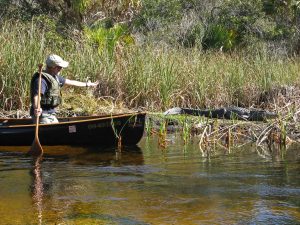 One of the hallmarks of FreeStyle is the ability to paddle quietly; virtually silently. If you are a nature photographer or simply an observer of the natural world, paddling in silence is an invaluable skill. Paddling silently allows one to get closer to wildlife. It allows one to hear the natural sounds, which may help you find that wildlife but also help you to experience the natural world, the way it was before you arrived and the way it will be, after you leave.
One of the hallmarks of FreeStyle is the ability to paddle quietly; virtually silently. If you are a nature photographer or simply an observer of the natural world, paddling in silence is an invaluable skill. Paddling silently allows one to get closer to wildlife. It allows one to hear the natural sounds, which may help you find that wildlife but also help you to experience the natural world, the way it was before you arrived and the way it will be, after you leave.

Silent paddling requires specific paddling skills. One must be able to propel the canoe forward and in reverse using in-water recoveries. Likewise, directional control must be accomplished without taking the paddle out of the water. Each time the paddle is removed from the water, it drips and even if your paddling skills are nearly perfect, there will be a bit of a splash when it reenters. I’ve experienced, first hand, how these small sounds have spooked birds, turtles, otters and other wildlife that I was stalking. One also needs to paddle without touching the paddle shaft against the side of the hull or the gunwales. We teach these skills at most of our symposia. Here is a link to an article that I have written, about this topic (https://freestylecanoeing.com/in-water-recoveries/)
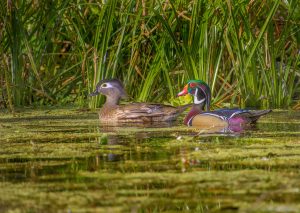
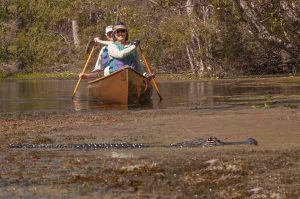 Paddling silently is easier with proper equipment. If stalking wildlife along the shore of a lake or pond, a canoe that maneuvers readily will be easier/quieter to control than one designed to track straight and which requires stronger methods to coax around turns. Aluminum canoes should be avoided, as they are nearly impossible to keep silent. Beyond that, any composite, Royalex (or other plastic) or wood/canvas canoe should be fine. Placing a length of foam pipe insulation over the gunwale on your paddle side is added assurance against a clunk from the paddle shaft. Another piece of insulation on the forward thwart will allow one to lay their paddle down, silently, across the gunwale and thwart when taking a photo. If pipe insulation is too bulky or you’d like something more securely attached, self-adhesive foam weather stripping works well, but is essentially “single use”.
Paddling silently is easier with proper equipment. If stalking wildlife along the shore of a lake or pond, a canoe that maneuvers readily will be easier/quieter to control than one designed to track straight and which requires stronger methods to coax around turns. Aluminum canoes should be avoided, as they are nearly impossible to keep silent. Beyond that, any composite, Royalex (or other plastic) or wood/canvas canoe should be fine. Placing a length of foam pipe insulation over the gunwale on your paddle side is added assurance against a clunk from the paddle shaft. Another piece of insulation on the forward thwart will allow one to lay their paddle down, silently, across the gunwale and thwart when taking a photo. If pipe insulation is too bulky or you’d like something more securely attached, self-adhesive foam weather stripping works well, but is essentially “single use”.
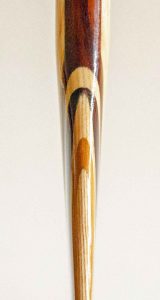
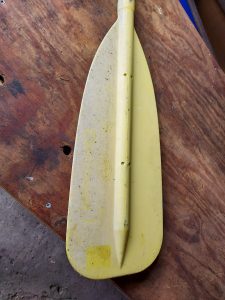
A refined paddle is a big advantage. Many plastic and even some wood paddles have a pronounced spine that continues way down the blade from the throat (where the shaft and blade meet). Some extend almost to the tip of the blade. Such a spine makes it impossible to do silent, in-water recoveries. The spine creates turbulence and gurgling sounds during the recovery and often during the power phase of the stroke. A more refined blade has a minimal spine or none at all. In the right hands, it can be silent, during all phases of the stroke.
Soft padding or a layer of carpet on the bottom of the canoe will dampen sounds and help you kneel more comfortably. If you’re taking pictures, that same padding will provide a silent place to put your equipment. Wear socks or soft booties that slide easily and are quiet when moving across that padding. Same thing with trousers. Direct skin on boat or padding often squeaks or at least doesn’t move smoothly. If it’s cool outside, wear soft clothing. Some outerwear, especially raingear can be noisy as you move about. For more discussion about this see https://freestylecanoeing.com/kneeling-part-1/.
I won’t get into the pros and cons of various cameras and lenses. That is far beyond the scope of this article but I’ll share some “universal” tips. Except for DSLRs, most modern cameras have electronic shutters and do not inherently make any sound when you press the shutter button. The click that you hear is electronically generated and is not necessary for its operation. Somewhere in the settings menu, you can generally shut the sound off. DSLRs do make some noise as there is a mechanical mirror that must flip up and then back down, whenever a photo is taken. Many have a “silent” mode which dampens the sound, considerably. If the camera emits any other sounds, such as on start up or shut down, silence them as well. Lastly, keep the camera out, and sitting on your kneeling pad or on a soft towel. Taking the camera out of or putting it back into any sort of dry box or bag will certainly alert the local wildlife. It’s been my experience that if the camera is locked away, the photo opportunity will be gone before it can be retrieved and gotten ready.
Lastly, pick your paddling buddies. Paddling solo is best. But if it must be a group, the smaller the better. Chatty paddlers are simply not welcome. All of your efforts at silence will be thwarted (pun intended). If you must communicate with a group member, use subtle sign language. Sudden movements such as waving arms are a sure-fire way to scare off wildlife.
So, there you have it. Learn some valuable skills. Choose appropriate equipment and a few minor modifications, and save the socializing for after the take out.